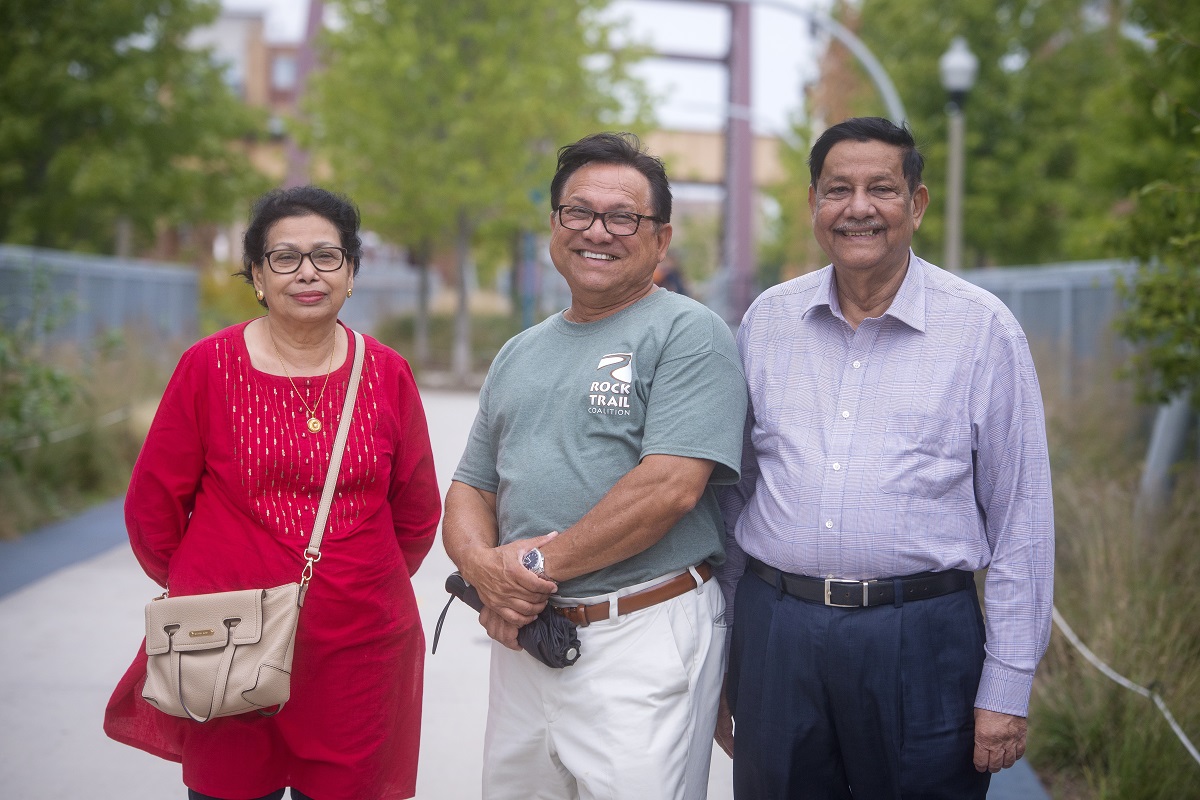Several communities in northeastern Illinois have established guides, services, and other initiatives aimed at helping residents age in place. While the COVID-19 pandemic has put a pause on some of these programs, the following examples highlight how public policies and public-private partnerships can help make communities more suitable for seniors.
Bolingbrook
Updated building code to improve accessibility
In 2003, the Village of Bolingbrook created a visitability code that requires all new homes to include design principles that allow access for all people, regardless of age or physical ability. While a perception of higher construction costs caused some initial hesitation, the village found that costs are minimal and homes incorporating visitability features are more marketable. There are now over 1,700 homes with full compliance. The ordinance includes the following criteria:
-
Entrance: All homes must have at least one step-free entrance.
-
Doors and hallways: All exterior and interior doors must be at least three feet wide.
-
Bathroom: There must be at least one bathroom on the floor closest to grade level. Bathroom walls must be provided with wall framing to support grab bars.
-
Electrical wall switches: All wall switches that control light fixtures and fans must be located no higher than four feet above the floor.
Learn more about the visitability code.
Hawthorn Woods
Created guide to aging in place
The median age in Hawthorn Woods (44.5 years) is significantly older than Lake County overall (37.5 years). To embrace their growing senior population, the Village of Hawthorn Woods created A Guide to Aging in Place in 2019. The guide provides tools and resources to help residents remain healthy and happy in their community, including information on transportation, community services, socialization, and more. For example:
-
Transportation: Eligible residents can use RideLakeCounty to travel to medical appointments, shop, and access employment. RideLakeCounty, which provides curb-to-curb, dial-a-ride transportation services, is managed by Lake County, townships within Lake County, Lake County Coordinated Transportation Services Committee, and Pace Suburban Bus. The service is funded in part by grants from the Regional Transportation Authority. Local matching funds for these federal grants are provided by Lake County and Pace Suburban Bus.
-
Socialization: Ela Township created Ela 55+, a program that offers activities for residents 55 and older and connects them to services that promote independence and well-being. In addition to social events, Ela 55+ provides free services, such as pharmaceutical assistance and senior health insurance counseling. During COVID-19, the program also offers pharmacy and grocery pick-up services for participants.
Northwestern suburbs
Launched housing collaborative
The Northwest Suburban Housing Collaborative (NWSHC) was created in 2011 to help five municipalities — Arlington Heights, Buffalo Grove, Mount Prospect, Palatine, and Rolling Meadows — develop regional solutions to address the short- and long-term housing needs of participating communities. In 2013, the collaborative conducted an in-depth study of the housing needs of senior citizens. Since then, NWSHC has worked with multiple agencies and partners to create programs and resources for seniors. Although the Northwest Housing Collaborative is no longer meeting, these programs are being continued under the North West Housing Partnership, including:
-
Handyman Program: The Handyman Program helps seniors and homeowners who have disabilities with minor home repairs. The program is available for residents in Palatine and Wheeling Townships.
-
CAPABLE Program: The Community Aging in Place, Advancing Better Living for Elders (CAPABLE) program builds on the Handyman Program by coordinating the services of a nurse and occupational therapist to identify residents’ health goals and recommend home improvements that help them remain at home. CAPABLE is eligible to all residents 65 and older within northwest Cook County.
Oak Park
Established commission on aging in place
In 2018, Oak Park formed a commission to advise the village board on policies that support aging in place. The Aging in Place Commission has since developed several initiatives:
-
Dementia Friendly Community: Local officials estimate that nearly 800 Oak Park residents 65 and older may be living with dementia. The Aging in Place Commission brought the public and community leaders together to learn about dementia and develop an action plan. The village then partnered with Oak Park Township, Oak Park Library, and the Park District of Oak Park to coordinate meetings, trainings, and form a group of volunteers. These efforts helped Oak Park earn designation in 2020 as a Dementia Friendly Community from the nonprofit organization Dementia Friendly America.
-
Business training: Oak Park businesses are encouraged to participate in dementia-friendly training to understand how to identify customers dealing with dementia and provide them with appropriate assistance.
Fire and fall prevention: The Oak Park Fire Department created an informational campaign to educate those working with seniors and people with cognitive impairment about fall prevention and fire safety.

